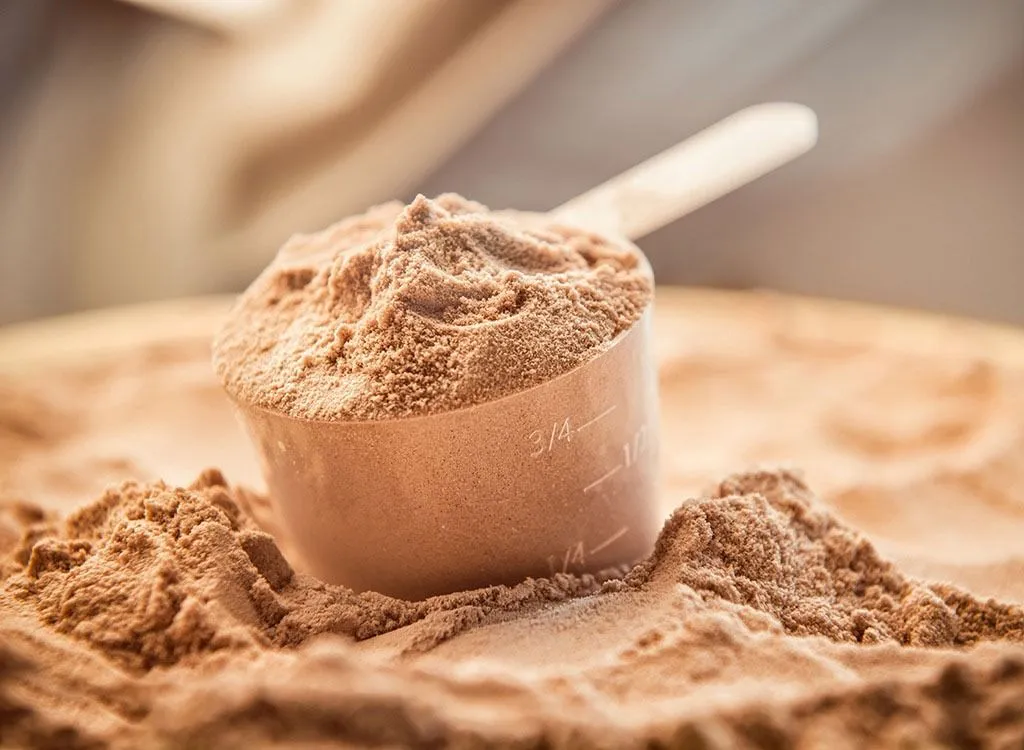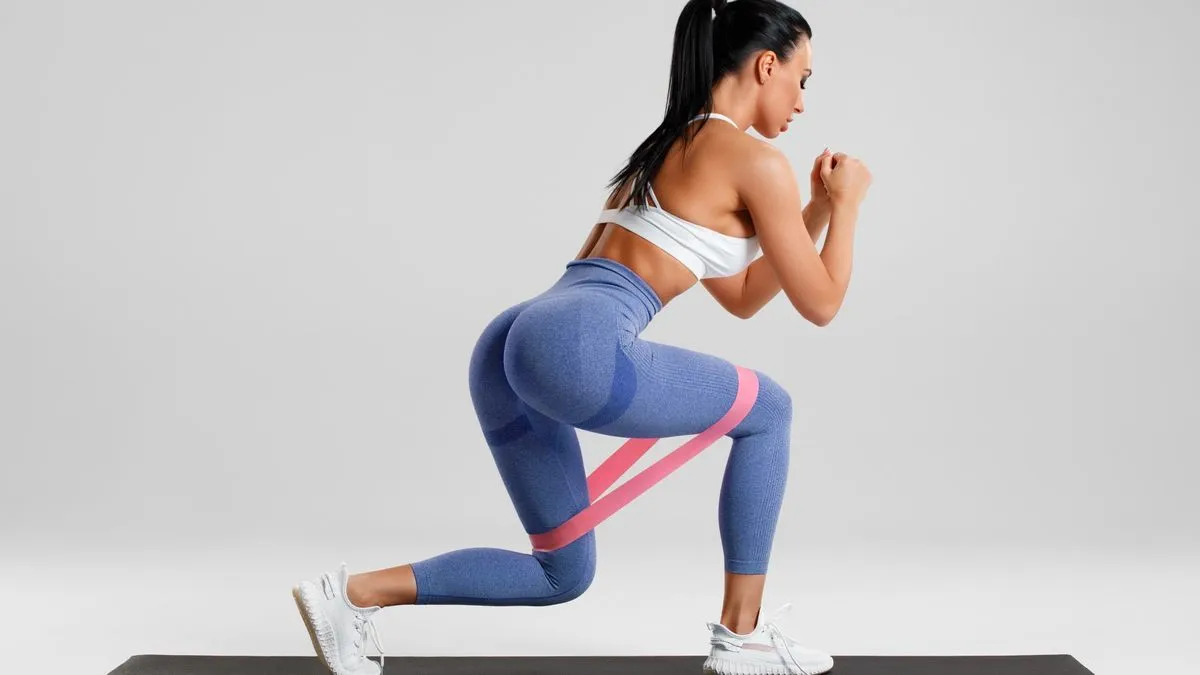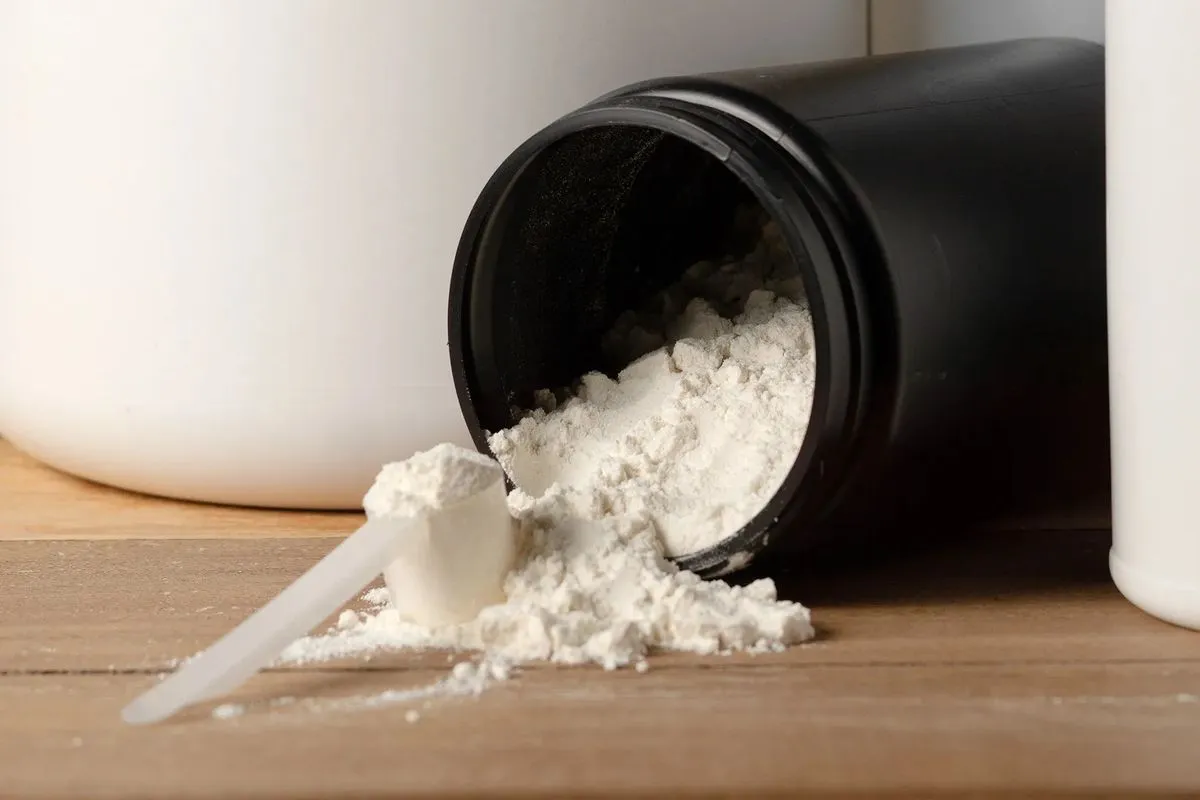HEALTH
Best Biceps Exercises to For Build Muscle
April 19, 2025

Not every arm workout gives your biceps what they need. When people talk about building arms, they usually mean biceps, but the mistake is thinking that any curl will do the job. The best biceps exercise is not always the heaviest. It is the one that makes your muscles work the way they are built to.
Good biceps training is more than just pulling a dumbbell up. It is about how you position your arms, how your wrist moves and how you feel the contraction at the top of the lift. With the right technique and smart choices, even basic moves can lead to visible results.
This list includes classic lifts, underrated variations and movements you can do with simple gear. Whether you are new to the gym or just tired of doing the same routine every week, these options can help your arms finally catch up to your goals.
Your Best Biceps List
Barbell Curl

Barbell curl is one of the oldest and most effective movements for building biceps mass. It primarily targets the biceps brachii, with the long head getting the most activation due to the hand positioning and the straight bar path. Because both arms work simultaneously, the barbell allows for heavier loads than dumbbells, making it ideal for progressive overload. In addition to the biceps, the brachialis and brachioradialis muscles also assist, which helps develop overall arm size and thickness.
Stand up tall with your feet about shoulder width apart. Grip a barbell with both hands, palms facing forward, just outside your thighs. Keep your elbows tight to your sides, chest lifted and shoulders back. Begin curling the bar upward slowly, making sure your upper arms remain still and close to your body throughout the lift. Focus on squeezing the biceps at the top of the movement for a second or two before lowering the bar back down in a controlled motion. Resist the urge to use momentum or bounce at the bottom. The slower the rep, the more muscle you activate.
Most people go too heavy on this exercise and end up swinging the bar with their back or shoulders. This shifts the work away from the biceps and puts strain on the lower back. Instead, lower the weight and focus on clean reps with full range of motion. Try pausing slightly at the bottom before curling again to eliminate any momentum. You can also add resistance bands or use a preacher bench to isolate the movement further as you progress.
Watch 💪
Incline Dumbbell Curl
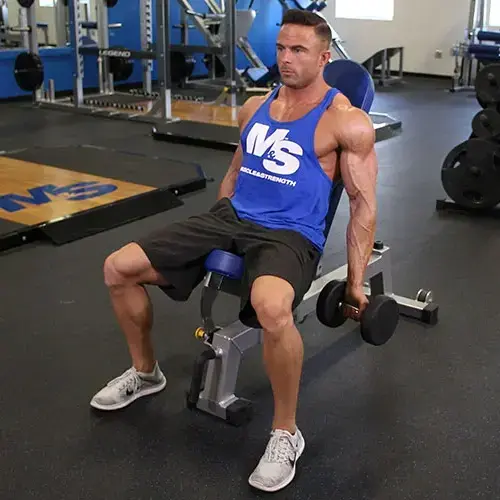
Incline dumbbell curl puts your biceps under a deeper stretch than almost any other curl variation. By leaning back on a bench, your arms are positioned behind your body, which places greater tension on the long head of the biceps. This makes it one of the most effective exercises for building length and peak. The position also limits your ability to cheat, so your biceps do all the work without help from your shoulders or back.
Sit on an incline bench set at about 45 degrees. Let your arms hang naturally at your sides with a dumbbell in each hand, palms facing forward. Keep your elbows fixed in position and slowly curl both weights up at the same time, focusing on squeezing your biceps at the top. Lower the dumbbells in a controlled motion, allowing your arms to fully extend and feel the stretch before repeating. Move slowly and do not let the weights swing.
Avoid letting your shoulders roll forward during the lift. Keep your chest open and your shoulders back throughout the movement. Try performing this curl one arm at a time to increase focus and control. Using lighter weight with perfect form here is more beneficial than going heavy. If you feel strain in your front shoulder, adjust the bench angle slightly.
Watch 💪
Hammer Curl
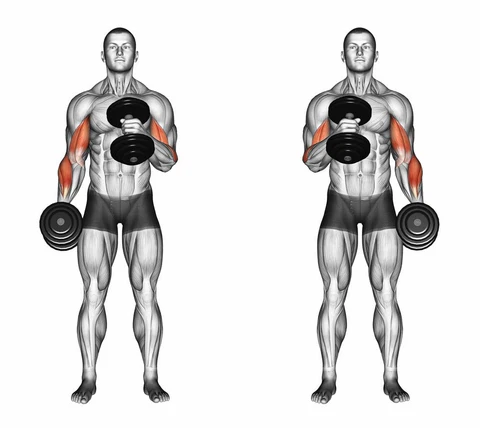
Hammer curls target the brachialis, a muscle that sits underneath the biceps brachii. Building the brachialis can actually make your biceps look bigger by pushing them up and out. This variation also involves the brachioradialis, which contributes to stronger and more balanced forearms. Because your palms face each other during the movement, there’s less strain on your wrists, making it ideal for people who feel discomfort during traditional curls.
Stand with a dumbbell in each hand, arms at your sides and palms facing your torso. Keep your elbows close to your body and curl the weights up together or alternately. The key is to maintain the neutral grip — thumbs pointing forward — throughout the movement. Squeeze at the top, then slowly lower the weights back to the starting position. Stay controlled on the way down to maximize time under tension. Avoid rocking your torso or letting the dumbbells swing.
Hammer curls are great for strength and size, but they also shine in high rep finishers. Try doing them at the end of a workout with lighter weight to fully fatigue the arms. You can also do them seated to reduce body movement or add resistance bands for more constant tension. Focus on keeping the grip firm and neutral without turning your wrists outward or inward.
Watch 💪
Preacher Curl
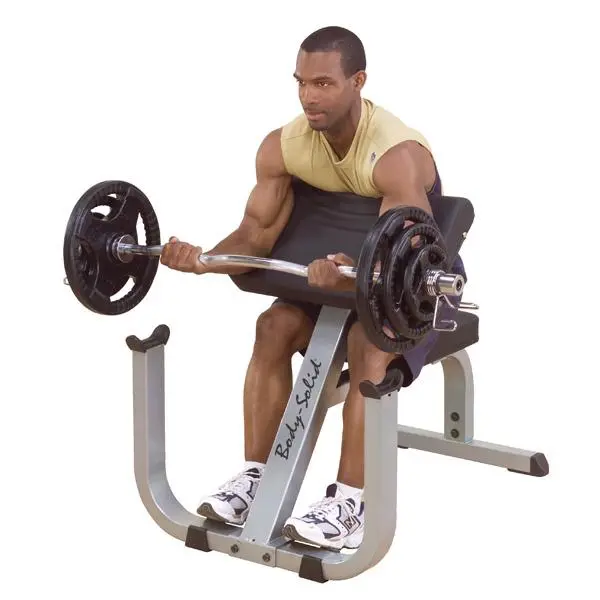
The preacher curl isolates your biceps more than almost any other movement by locking your arms into a fixed position. Because your elbows are supported by the pad, you remove momentum and force the biceps to do all the work. This makes the exercise incredibly effective for building size and creating a strong contraction at the top of the lift. It targets both heads of the biceps but emphasizes the lower portion of the range, helping you build thickness and strength near the elbow.
Sit down at a preacher bench and grab an EZ curl bar or dumbbell with an underhand grip. Rest your upper arms flat on the pad with your armpits tucked into the top of it. Start with your arms extended but not locked. Slowly curl the weight upward, squeezing your biceps at the top. Pause briefly, then lower it with control until your arms are fully extended. Do not let the weight drop. The goal is full range and deep control. Keep your torso still and avoid lifting your chest off the pad.
Because of the strict form, you should go lighter on preacher curls than with other curls. Focus on tempo: three seconds up, one second squeeze, three seconds down. To avoid wrist strain, try using an EZ bar or rotating dumbbells slightly inward. For extra tension, do the last few reps one arm at a time. You can also add a drop set for a brutal finisher.
Watch 💪
Concentration Curl
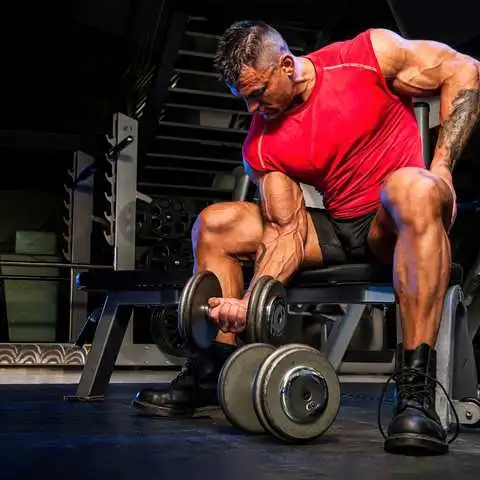
The concentration curl is all about focus, hence the name. It isolates the biceps by limiting body movement and allowing full attention to be placed on the muscle. Since you are working one arm at a time while seated, it reduces the chances of cheating with momentum. This exercise emphasizes the peak of the biceps and improves the mind muscle connection, which is critical for growth over time. It is especially effective for shaping the upper part of the biceps when done correctly and consistently.
Sit on a bench with your legs spread, holding a dumbbell in one hand. Lean forward slightly and rest your working elbow against the inside of your thigh, allowing the arm to hang straight down. Keep your chest up and your back straight. Slowly curl the dumbbell upward, rotating your pinky slightly toward your shoulder to intensify the squeeze. Pause briefly at the top, then lower the weight in a controlled motion until your arm is fully extended again. Avoid using your back or jerking the weight upward.
Use a mirror to watch the movement and keep your form honest. This is not a strength test — it is about precision and feel. Keep the reps slow and controlled, and do not bounce at the bottom. You can even add a three second hold at the top for maximum burn. Switch arms only after finishing all reps on one side to keep your focus strong.
Watch 💪
Cable Curl
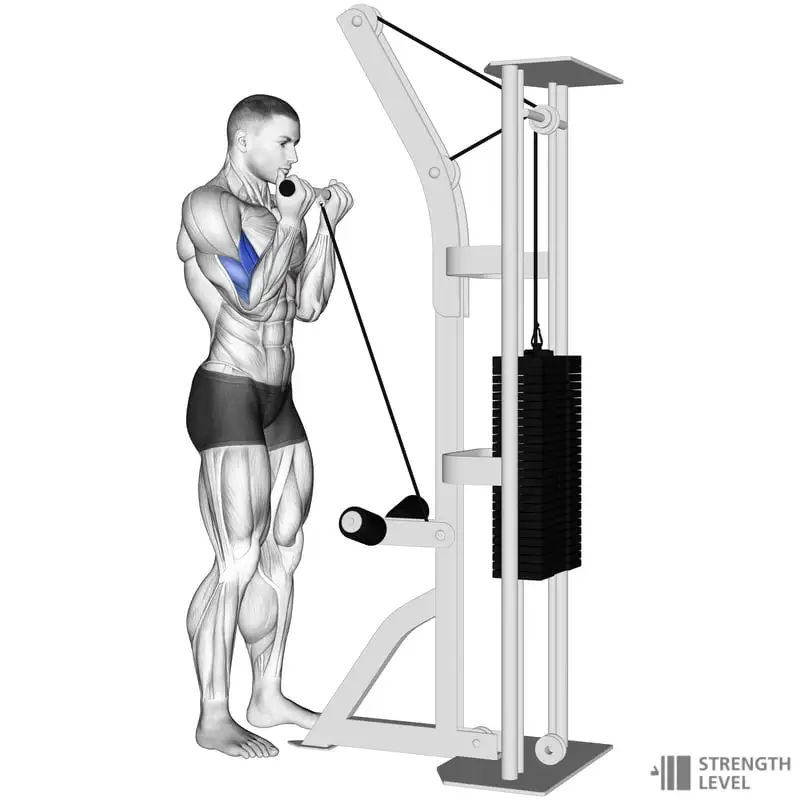
Cable curls offer constant tension throughout the entire range of motion, which is something free weights do not always provide. That consistent resistance helps to increase time under tension, which is one of the key drivers of muscle growth. The cable setup allows you to adjust the angle and grip with different attachments, so you can easily shift the emphasis to various parts of the biceps. It is an excellent choice for targeting both heads of the biceps with high precision and smooth motion.
Attach a straight bar or EZ curl bar to the low pulley on a cable machine. Stand facing the stack and grab the bar with both hands, palms facing up. Step back slightly and keep your elbows tucked into your sides. Slowly curl the bar toward your shoulders while keeping your upper arms locked in place. Squeeze at the top of the movement and lower the bar back down with control. Maintain tension in your arms even at the bottom, avoiding full rest between reps. Keep your feet planted and avoid swinging or leaning back.
If your gym has adjustable cables, try using a rope or rotating handles to shift your grip and isolate the biceps differently. For an added challenge, take a step or two back to create more drag and resistance through the movement. To increase difficulty, slow the eccentric phase to four or five seconds per rep. You can also turn this into a drop set by quickly reducing the weight and continuing the set to failure.
Watch 💪
Zottman Curl
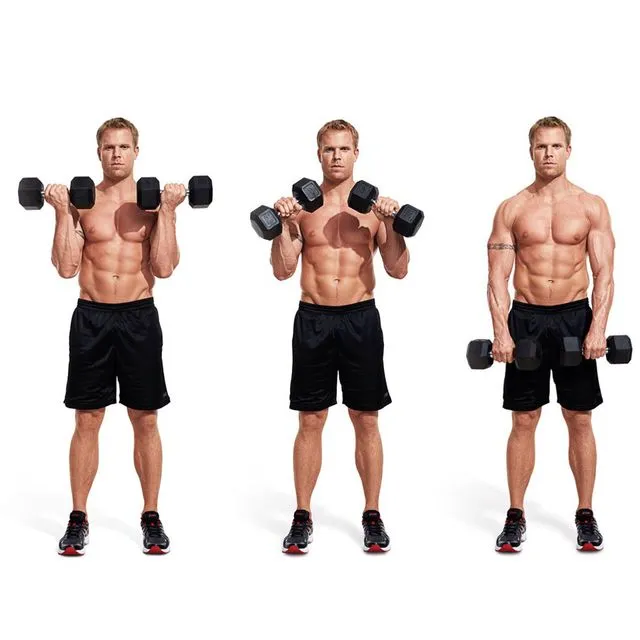
The Zottman curl is a unique movement that trains both the biceps and the forearms in a single motion. It combines the benefits of a standard curl and a reverse curl, making it one of the most efficient arm builders you can do. During the upward phase, your palms face up, targeting the biceps. During the lowering phase, you rotate your wrists to a palms down position, shifting the tension to the brachioradialis and forearms. This two in one approach helps build size, grip strength and arm definition in one smooth flow.
Stand with a dumbbell in each hand, arms at your sides, palms facing forward. Curl the weights upward like a normal dumbbell curl, keeping your elbows tucked in. At the top of the lift, rotate your wrists so your palms face downward. Slowly lower the weights in this reverse grip, controlling the motion. Once at the bottom, rotate back to the starting position and repeat. The key is smooth, controlled transitions and resisting the urge to rush through the twist.
Use moderate weights to maintain control through both phases of the lift. Rushing the rotation or using momentum defeats the purpose of the exercise. Focus on keeping your wrists aligned and your elbows locked at your sides. Zottman curls work well at the end of a workout to fully exhaust both biceps and forearms. If you are looking for a smart way to get more out of a single movement, this one delivers.
Watch 💪
Chin Up

Chin ups are a bodyweight exercise that hit the biceps hard, especially when done with proper form and control. Unlike pull ups, chin ups use an underhand grip, which shifts more of the load to the biceps rather than the back. This makes them an excellent compound movement for arm development, while also strengthening the shoulders, forearms and upper back. Chin ups are great for overall upper body strength, but when programmed right, they can build serious biceps peak without ever touching a dumbbell.
Grip a pull up bar with your palms facing you, about shoulder width apart. Hang with your arms fully extended and your legs off the ground. Engage your core and pull yourself upward by bending your elbows and driving them down toward your ribs. Focus on bringing your chin over the bar without swinging your legs or arching your back. Lower yourself slowly and under control until your arms are straight again. Maintain tension through your arms the entire time. Perform for reps or time.
If you struggle to complete a full chin up, use a resistance band or an assisted pull up machine. Focus on the eccentric portion by lowering yourself slowly, even if you cannot pull all the way up yet. For more challenge, add weight with a dip belt or slow down your tempo. Chin ups pair well with isolation curls in a superset to fully fatigue your arms.
Watch 💪
Spider Curl
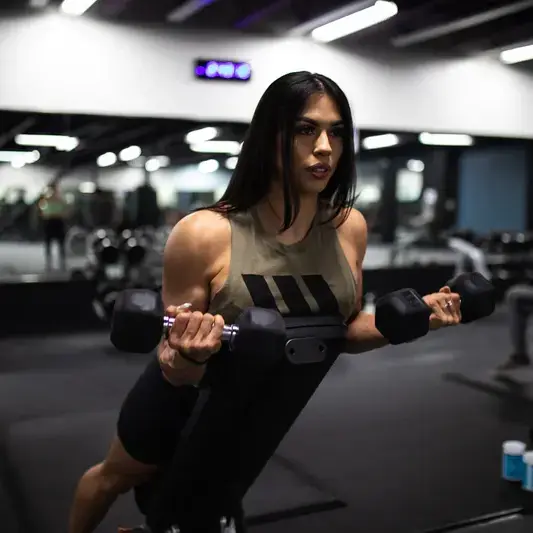
Spider curls are one of the most intense isolation movements for your biceps. By positioning your upper arms in front of your torso and allowing them to hang vertically, the exercise prevents you from using momentum or assistance from your shoulders. This posture maximizes the stretch at the bottom and the squeeze at the top, making every rep feel longer and harder. Spider curls target the short head of the biceps and improve the muscle’s thickness and shape from the front view.
Set up an incline bench at around a 45 degree angle. Lie face down on the bench so your chest rests against the pad and your arms hang straight down toward the floor, holding a pair of dumbbells. With your palms facing up, curl the dumbbells toward your shoulders, keeping your upper arms completely vertical and your elbows fixed. Squeeze your biceps at the top, then lower the weights slowly back to the starting position. Control is key, and the position makes it almost impossible to cheat.
Keep your shoulders relaxed and avoid letting them lift off the bench. Focus on moving only your forearms. Go lighter than you would on other curls — spider curls are not about brute strength, they are about tension and precision. For added intensity, try pausing halfway up for a second or two before completing each rep. Use this exercise near the end of your workout when your biceps are already warmed up and fatigued.
Watch 💪

